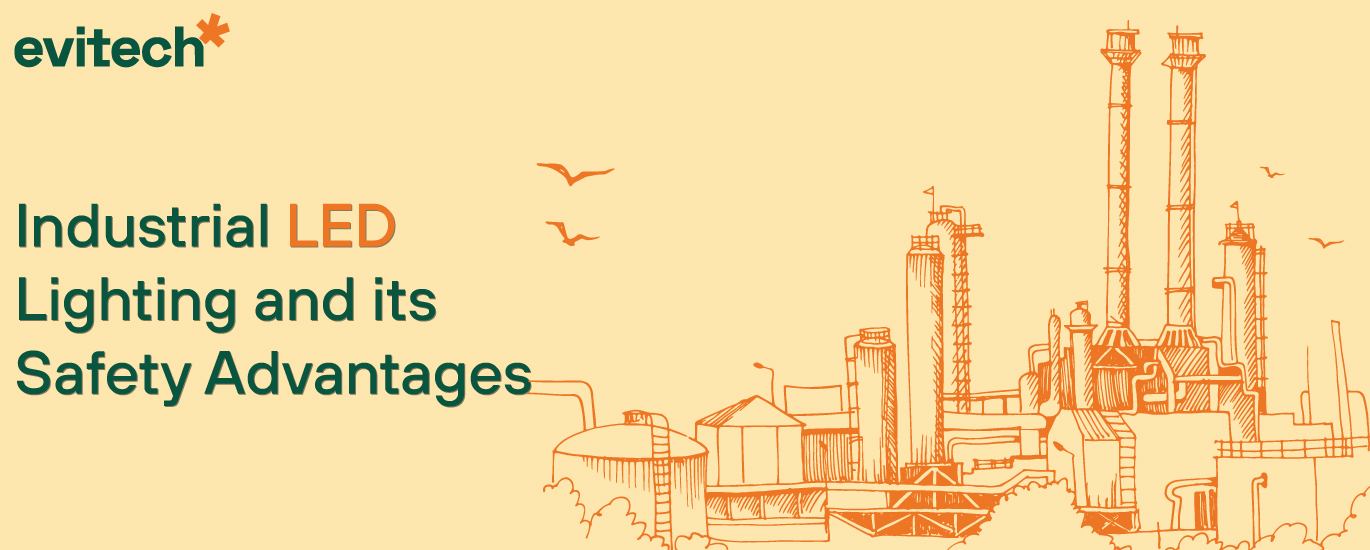Industrial LED Lighting and its Safety Advantages
Industrial LED lighting offers energy savings of over 50% when replacing traditional MH (metal halide or metal halide) type lamps. However, energy savings is not the only benefit obtained; LED luminaires also improve safety in industrial spaces.
The main disadvantages of MH lamps are as follows:
· Inability to instantly wake up if accidentally turned off.
· Fragility and the risk of contaminating products with glass if they break.
· Its short useful life, requiring frequent replacements where personnel must work at height.
Industrial LED luminaires eliminate all three problems as they can be instantly reactivated and made entirely from impact-resistant materials. In addition, they have a lifespan of 5 to 10 times longer than MH bulbs.
Industrial LED lighting offers energy savings and greater safety, requiring less maintenance than traditional MH lamps.
LED Luminaires Have No Waiting Time To Reactivate
One of the main limitations of MH lamps is that they cannot be instantly reactivated during a power outage. In most cases, waiting 5 to 10 minutes is necessary before the lighting can be switched on again.
Even with MH lamps designed for a quick start, waiting 2 minutes or more is necessary.
Even a few minutes without lighting in an industrial space can pose a significant risk to personnel, especially if the plant uses heavy machinery or includes high-temperature processes.
Industrial LED luminaires do not suffer from this limitation and can instantly reactivate when switched off, ensuring continuous lighting in industrial spaces.
Also, due to an extended power outage, LED luminaires can stay on for a long time with battery backup due to their low power consumption.
Industrial LED Fixtures Do Not Require Glass Bulbs
Because they are made of glass, traditional MH bulbs are brittle. They can easily break if the luminaire is impacted and are also prone to exploding near the end of their useful life when they can no longer contain the internal arc flash. When an MH lamp fails in this way, there are two associated risks:
· Less visibility in the area under the lamp.
· Scattering of glass fragments in work areas. This can be especially dangerous in an area where food is processed or stored.
Industrial LED lighting uses solid-state technology, and it is possible to manufacture the luminaires without using glass in their components. This eliminates the risks associated with glass particles being dispersed when an MH lamp fails in an industrial area.
Industrial LED luminaires can illuminate processes without the risk of contaminating products with glass fragments.
LED Luminaires Reduce Maintenance Work at Height
The useful life of MH lamps is around 10,000 hours, but they can lose more than 30% of their brightness in the first 5,000 hours of use. Therefore, they are frequently changed before reaching the end of their useful life, and in industrial spaces, this implies working at height.
On the other hand, industrial LED luminaires offer a lifespan of up to 100,000 hours. Even in an industrial plant operating 24/7, this equates to more than a decade of continuous operation without the need to change lamps. With fewer lamp changes, the risk of an accident while working at height is also reduced.
ConclusionIndustrial LED lighting not only saves energy but also makes facilities much safer. The risk of a glass bulb failing and releasing shards of glass, as well as the risk of prolonged lighting interruption, is eliminated. The work of electrical maintenance personnel also becomes safer since a lamp is rarely changed.
Latest Post
- Why do LED Spotlights Burn?
- What is the electricity consumption of LED Christmas lights?
- What are LED lighting towers, and What are their Applications?
- Using Natural Light in LED Lighting Designs
- Use of LED Lights in Domestic Houses
- Three Ways to Apply LED Light in Buildings
- Savings in Air Conditioning with LED Lighting
- Replacement of Halogen Spotlights by LED
- Recommendations when Buying LED Lights for Cars
- LED Lighting Connected to the Internet: A Promising Technology


